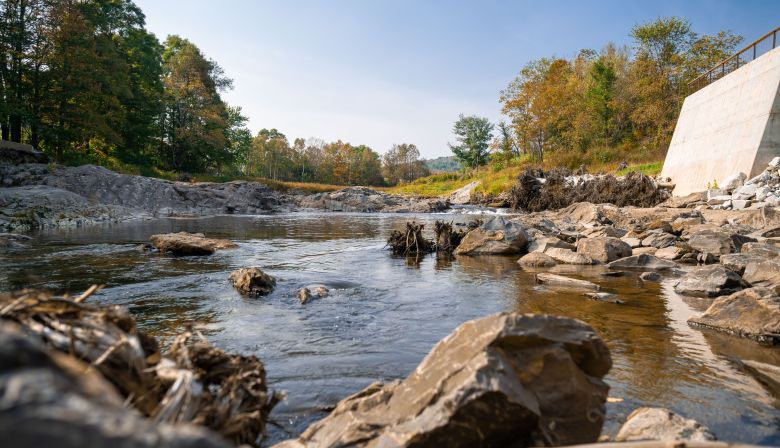
Subscribe & stay up-to-date with ASF


The first day I crossed paths with Maranda Nemeth, the fervor in her demeanor mirrored the ceaseless flow of the rivers she vows to protect. As I casually strolled into her project site, her meticulous vigilance promptly guided me through the requisite protocols. My whimsical nature and intent adventure of snapping pictures and fancied excavator operations contrasted with Maranda’s laser-focused diligence. Everything matters in her realm, every detail is a step closer to the conservation heart beat. This isn’t just about Maranda’s job at ASF; it’s about embodying the phrase, “the way you do anything is the way you do everything.” Maranda’s approach is as meticulous as it is passionate.
Navigating through conservation and restoration projects is akin to sailing against a torrent—managing a medley of personalities, treading through unforeseen hurdles, grappling with power dynamics, all under the stern eye of a tightening budget. The spectacle of a dam removal usually evokes images of raw mechanical might and stern faces behind rugged beards. However, the real might lies in the unseen—behind closed doors, beyond the late hours where Maranda, with a growling stomach, orchestrates the strategy that powers the gears of restoration.
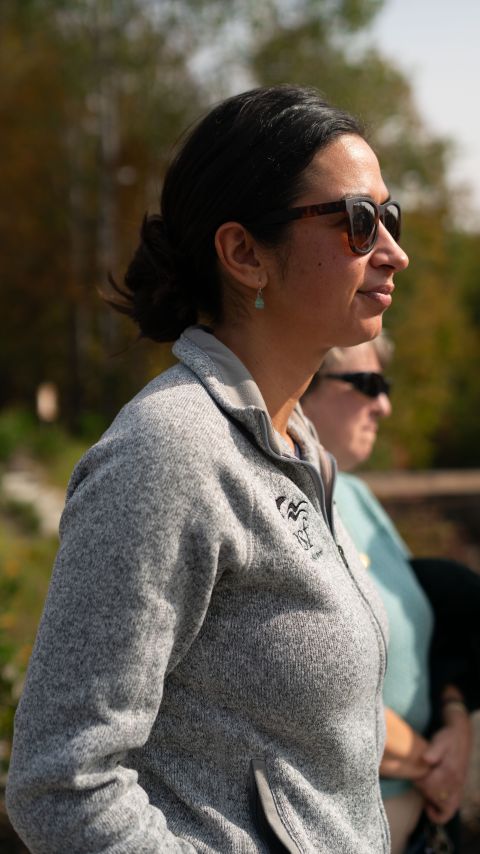

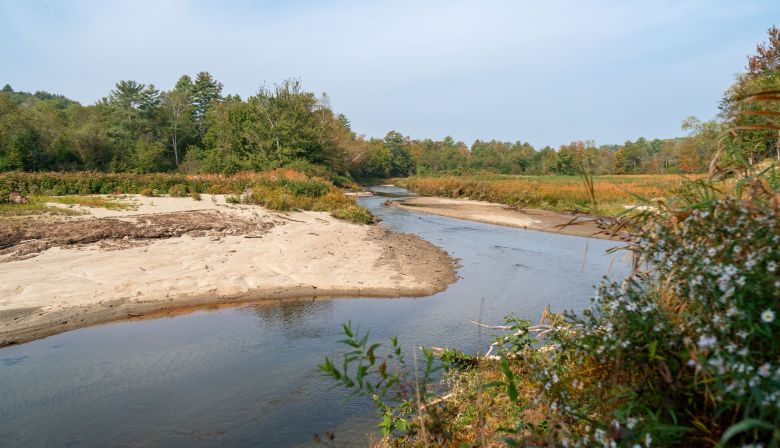

The narrative of dam removal often skims the surface, overlooking the myriad undercurrents that also demand attention—culverts, road crossings, and other watershed issues. Walton’s Mill project didn’t just stop at dam removal; it extended its touch to two other projects, with another awaiting its turn. The cascade of efforts will eventually unveil an additional 54 river miles of restored habitat.
The genesis of Walton’s Mill project traces back to 2010 when Paul Christman initiated his recovery program in the Kennebec; planting eggs, building relationships and recruiting support. The turning point for this project arrived in 2015, with the return of two adult salmon spawning near the bridge just downstream of the dam triggered a chain of actions that led ASF to the forefront of restoration efforts. The choice was clear—either a costly technical fish passage or a full dam removal. ASF, valuing efficacy and long-term impact, championed the latter.

To see the latest report from the Kennebec and Androscoggin, click here!
To see the latest report from the Penobscot, click here!
The narrative then wove in Maranda, whose expertise was enlisted through a NOAA-funded grant, embodying ASF’s commitment to spearhead impactful conservation work. Her prior success with the Coopers Mill Dam Removal on the Sheepscot River was the testament ASF needed to entrust her with the Walton’s Mill Dam project.
This continuum of experience and its transference across projects underline the unspoken essence of programs like Wild Salmon Watersheds. It’s not merely the individuals who benefit evolve through these undertakings; it’s the salmon, the rivers, the ecosystems. Maranda’s story underscores why we need more relentless spirits like hers, channeling the essence of ASF’s mission—Wild Salmon. Wild Rivers. Stable work environments. Through the lens of relentless conservationists like Maranda, every ripple of effort counts towards the grand narrative of restoration and sustainability.
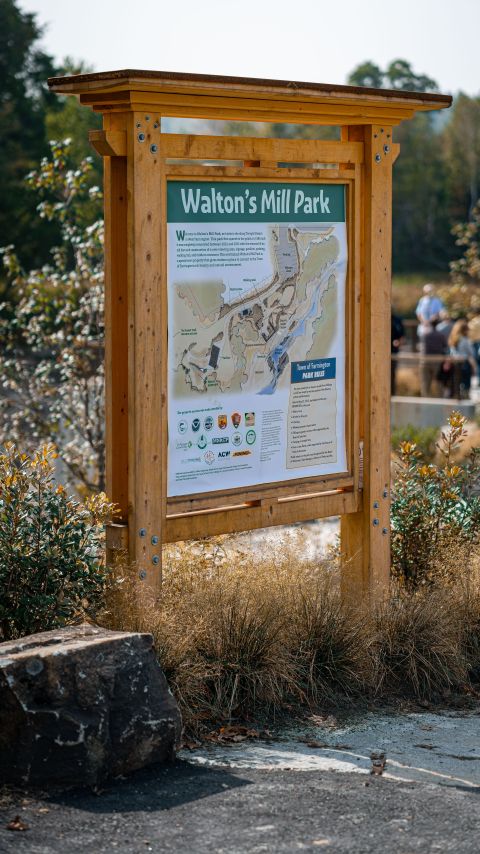
Thank you for being part of the Rivernotes community and tuning in each week as I navigate the stunning, rugged landscapes of salmon country. As always, share the Rivernotes blog with friends who might appreciate these stories. Each share and gift given becomes a ripple that could spark a wave of change.
Please consider contributing to ASF, HERE.
Also, I love hearing from you all, especially those of you who challenge me to do a better job! Please, always feel encouraged to reach out directly to Rivernotes@asf.ca or Pdore@asf.ca with comments, questions, or concerns!
Until next week, stay sharp, and tight lines!
Peter
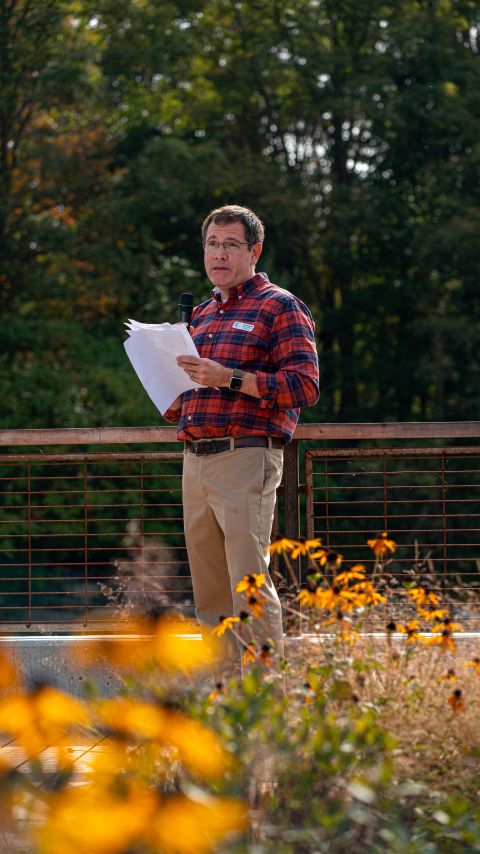
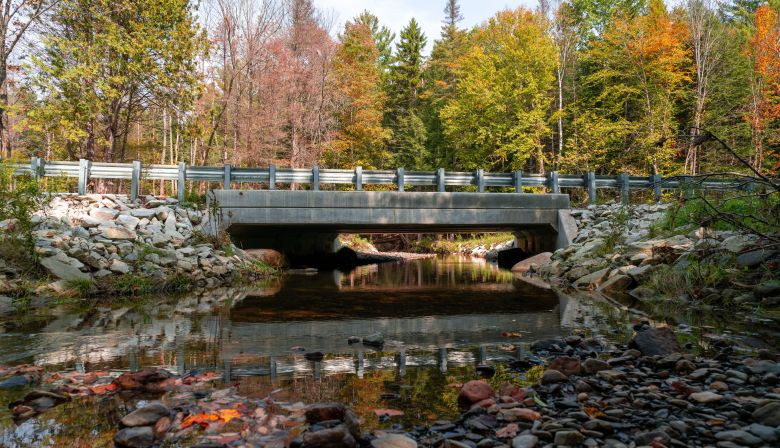
ASF and Oxbow to host IF4!
Get ready for a night of incredible films and fun giveaways hosted by the Atlantic Salmon Federation at Oxbow Brewing in Portland, Maine on October 10th at 6:30 PM. The International Fly Fishing Film Festival is an event you don’t want to miss! Plus, admission is free.
Don’t forget to make a donation to ASF to help protect wild Atlantic salmon. Each donation makes you eligible for the awesome gear and swag giveaway at the event!

Miramichi smallmouth project will not proceed
ASF and partners in the Working Group on Smallmouth Bass Eradication in the Miramichi announced that the project has been called off. This means invasive smallmouth bass are in the Miramichi to stay.
We spared no effort to stop smallmouth from colonizing and spreading in the watershed, but now they are there to stay. Check out our statement to learn how hard we tried to do the right thing for wild Atlantic salmon: https://www.miramichismallmouth.com/news
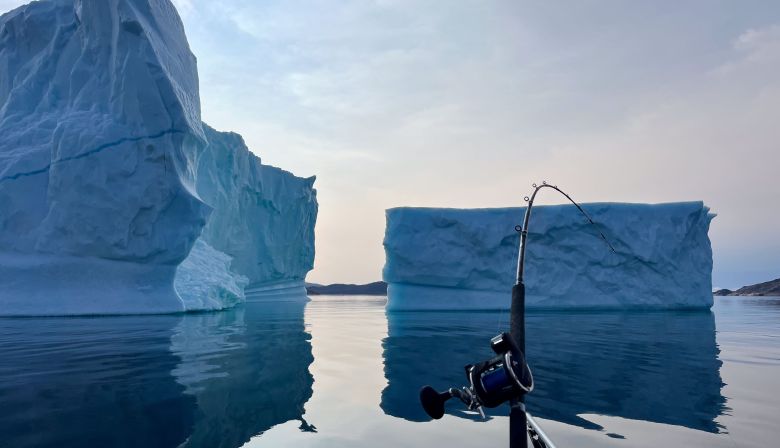
Aquaculture salmon escape from sea-cages all the time, all around the North Atlantic. Last month ASF announced we had detected a large escape in the Bay of Fundy. To our knowledge, no one in DFO or the New Brunswick government have lifted a finger to find out where the fish have gone or to recapture them.
In Iceland, the escape of 3,500 salmon from a sea cage owned by Mowi has triggered a police investigation, organized efforts to seek and remove the escapees, and a national outcry.
ASF is determined to get the same respect for wild salmon and wild rivers in North America. If you’re interested in learning how you can help, write us at savesalmon@asf.ca
Press release: https://www.asf.ca/news-and-magazine/news-releases/asf-detects-escaped-aquaculture-salmon-in-the-bay-of-fundy
Iceland story: https://www.theguardian.com/environment/2023/sep/30/thousands-of-salmon-escaped-an-icelandic-fish-farm-the-impact-could-be-deadly
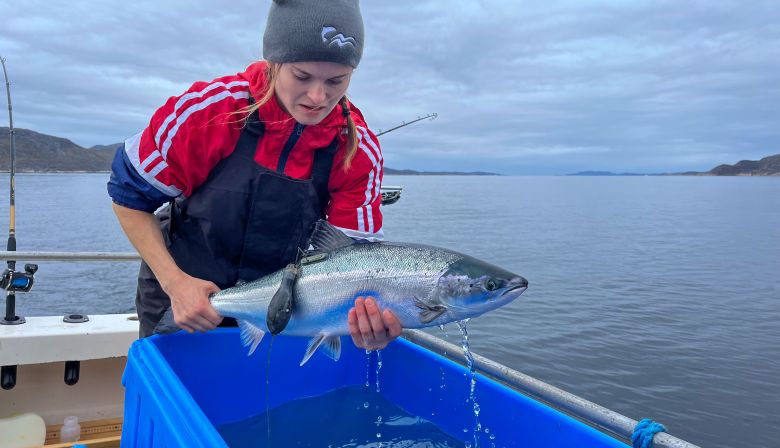
David Roth (CRI) and I landed in Qaqortoq on the evening of Sept 13, welcomed by a spectacular aurora display over the harbor. We set sail the next morning after swiftly assembling the trolling and tagging gear. Despite locals reporting a slow salmon fishing season due to unusual ice amounts in the fjord, we commenced our mission amidst floating icebergs and debris.
The fjord’s environmental dynamics, illustrated by a hot dry summer with sea surface temperatures peaking at 16°C, remain an enigma in understanding salmon distribution in the Igaliko fjord.
By September 14, the commercial salmon quota for the region was met, shifting the local market’s focus from salmon to wolf fish, cod, seal, and whale meat. However, salmon fishing persisted in the northern city of Nuuk.

Hurricane Lee’s peripheral winds kept us ashore for 3 days, yet post-storm, our catches increased, peaking at 12 salmon in a single day. Despite slow starts, each day on water held its share of action and tranquility, the latter allowing us to revel in nature’s spectacle from harp seals to minke whales passing by.
The salmon’s erratic behavior during capture, ranging from vigorous resistance to passive approaches, only intensified our engagement and adaptive strategies to ensure safe landings.
Trips to Qaqortoq over three years have fostered a profound connection with the salmon, the community, and the shared enthusiasm for understanding and preserving these majestic creatures. The local’s hearty spirit and insightful discussions have enriched my experience immensely.
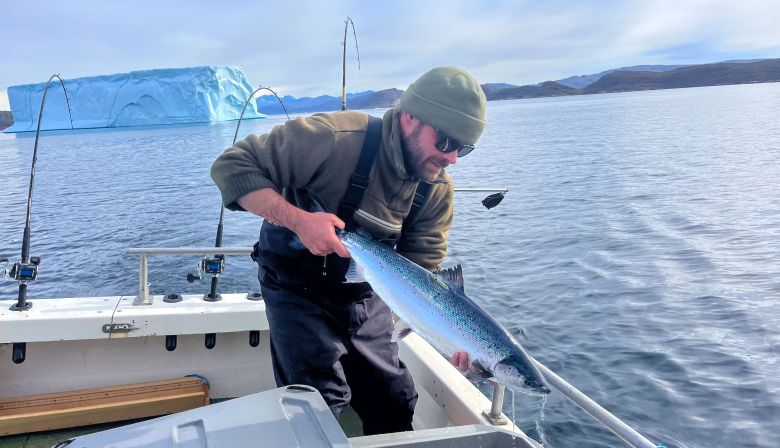
In collaboration with David Roth (CRI) and Tanya Condo (AGHAMM/MWIFMA), we tagged 27 salmon with Pop-up Satellite Archival Tags (PSATs) and acoustic tags, 5 with PSATs only, and 20 with acoustic tags only. Our partners from DFO and NOAA are extending our efforts, planning to tag approximately 150 more salmon by late October.
This expedition, while physically demanding and time-constrained, has propelled my motivation to contribute towards the enduring journey of these incredible fish, even as I transition back to desk-bound endeavors for the winter.
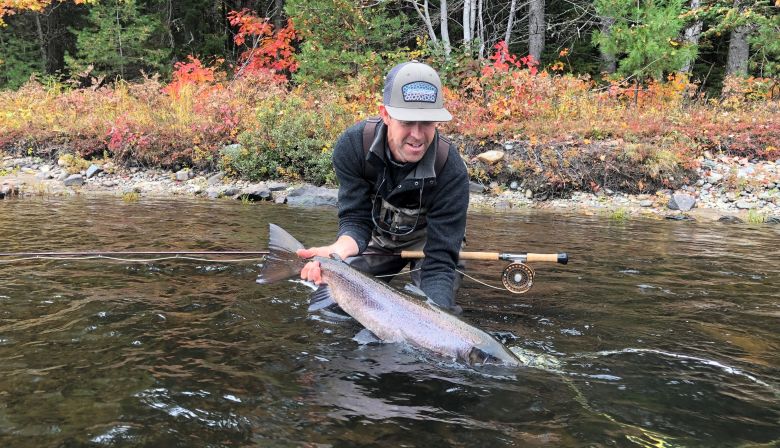
Serge Collin, New Brunswick Program Director reports:
To see the latest barrier report from the Dungarvon, click here!
To see the latest report from the NW Miramichi, click here!
As the Restigouche 2023 season draws to a close, the spotlight now shifts to Miramichi and Nepisiguit in New Brunswick—heralding prime opportunities for Fall salmon fishing enthusiasts!
It’s hard for me to pick a favorite season for chasing the elusive Wild Atlantic salmon since each season exudes its unique charm. Yet, there’s something undeniably special about casting lines in the serene waters of the Cains and the Nepisiguit come October. The season’s essence is only heightened by the breathtaking display of Autumn foliage, painting a picturesque backdrop that seems to honor the majestic presence of the river’s king, now adorned in colors that mirror the surrounding splendor.
Despite the rivers still running high, whispers among the angling community hint at an exceptionally rewarding fishing season. The increased water levels, often seen as a harbinger for a good fishing season, promise the potential for abundant catches. The cool Autumn air mixed with the thrill of the catch amidst a kaleidoscope of fall colors creates an atmosphere that resonates with both seasoned anglers and novices alike.
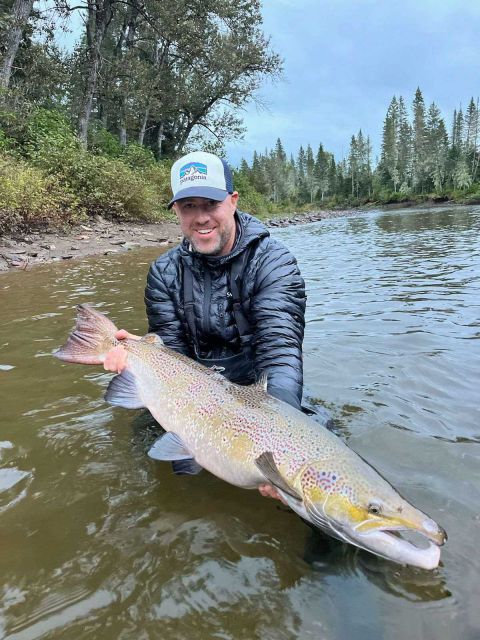
The blend of crisp weather, the vibrant tapestry of fall colors, and the promising abundance of salmon beckons every angler to experience the magic of Fall salmon fishing in New Brunswick. The camaraderie among fishermen, the gentle whispers of the river, and the rhythmic dance of casting and reeling under a canopy of red and gold leaves is a scene that etches itself into the heart of every angler.
So, as we bid adieu to the Restigouche season, the rivers of Miramichi and Nepisiguit await to unfold tales of adventure, perseverance, and the timeless bond between nature and every soul seeking solace in its embrace.

Deirdre Green, Nova Scotia Program Director reports:
Rivers in mainland Nova Scotia are experiencing low water levels, leading to a slowdown in hook-ups. However, anglers are still expressing positive feedback regarding the size, condition, and quantity of Atlantic salmon this season, especially in the Margaree and smaller Cape Breton rivers. Both seasoned and novice fly fishers are releasing numerous bright fish. With water levels decreasing and lower pools filling up with fresh fish, many are looking forward to a few good rainfalls in October. The forecast for Sunday seems promising, making many hopeful for better fishing conditions. See you all out there swinging!
Parr on the Portapique As the autumn field season nears its end, various groups are wrapping up their final mark and recapture efforts. The Maritime Aboriginal Peoples Council (MAPC) recently concluded their electrofishing surveys, a key part of their ongoing Salmon Comparative Assessment Project. Gavin Scott, the SCA Project Manager at MAPC, reports a successful electrofishing season. Over 60 juvenile Inner Bay of Fundy (iBoF) Atlantic salmon were captured across a small number of sites in two watersheds—Debert and Folly, on mainland Nova Scotia. The team observed more juveniles jumping from the water than could be netted, indicating a thriving juvenile population in these freshwater environments.

A season highlight was discovering a few parr within Matheson Brook in the Portapique watershed, one of MAPC’s In-Situ Incubation sites. This past May marked the first time MAPC incubated and released juveniles on this tributary. Although not as many were recaptured in the fall as hoped, the size of a few individuals was intriguing. Two salmon measured at 6.4 and 6.5cm long, typically indicating a 1+ parr salmon according to MAPC’s partners at the ColdBrook Biodiversity Facility.
This discovery aligns with previous MAPC findings in this watershed, where eDNA samples from this tributary tested positive for Atlantic salmon DNA, long before any eggs were incubated. This raises questions about the origin of these fish. There are speculations about a potential remnant wild population, suggesting returning adults might be spawning. Another theory posits these 1+ parr might be offspring of open-net pen aquaculture escapees, a significant concern in other iBoF rivers due to its detrimental impact on wild populations.
To ascertain the parr’s origin, the team collected tissue and scale samples from one of the captured individuals at Matheson Brook. With assistance from the genetics lab at DFO, they are keen on uncovering more about this juvenile salmon’s genetic makeup.
